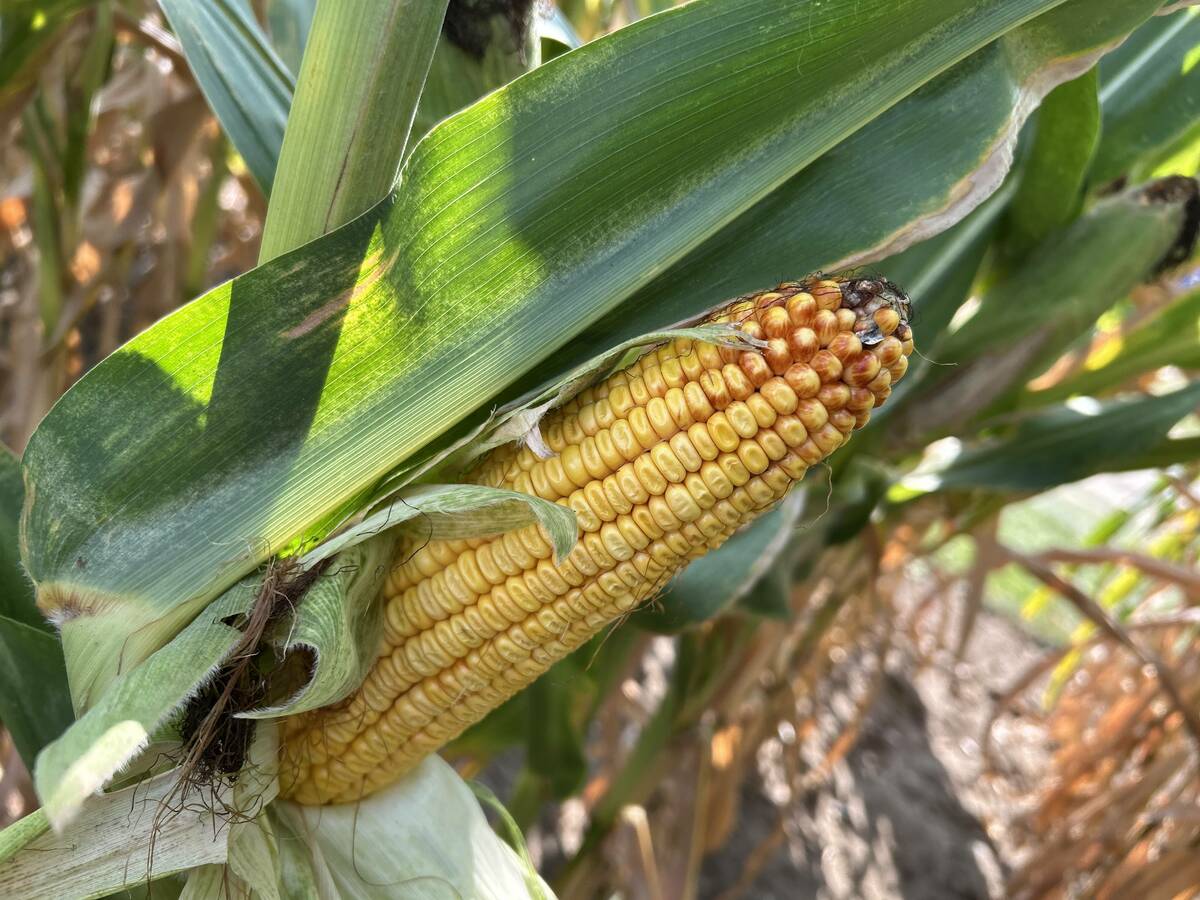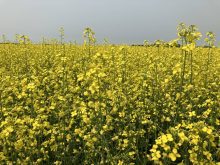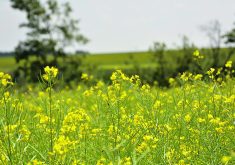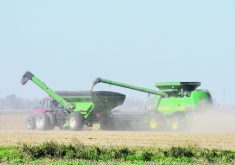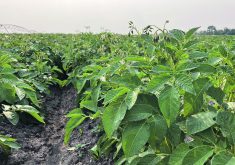Glacier FarmMedia – Model-based estimates used by Statistics Canada showed the 2025/26 crop year has seen increases in canola, corn for grain, oats and lentils production while seeing dips in spring wheat, durum wheat, soybeans and barley in comparison to 2024/25.
Using satellite imagery and agroclimate data, StasCan has shown crop conditions across the Prairies have been variable throughout the growing season. In some areas, lower-than-average precipitation and prolonged high temperatures resulted in below-average crop conditions at of the end of July, while parts of Western Canada that received sufficient precipitation saw above average crop conditions.
In Alberta, provincial reports indicated almost two-thirds of major crops were rated as being in good to excellent condition at the end of July, above the five-year average for the period of 53 per cent. Some areas lacked sufficient moisture and will likely impact yield.
Read Also

Organic farmers urged to make better use of trade deals
Organic growers should be singing CUSMA’s praises, according to the Canadian Chamber of Commerce.
In Saskatchewan, sufficient rainfall in some parts of the province resulted in normal crop development, while moisture stress attributed to dry conditions is reported to have resulted in some crops maturing ahead of normal. Parts of Manitoba received less than half the normal amount of precipitation throughout the growing season as of the end of July, and this—combined with high temperatures early in the growing season, may have impacted yields for some crops.
Wheat production is expected to decrease on lower yields
Nationally, wheat production is projected to edge down 1.1 per cent to 35.5 million tonnes in 2025/26, largely attributable to lower anticipated yields, which are expected to fall by 1.2 per cent to 49.6 bushels per acre. Harvested area is expected to remain steady, rising slightly to 26.3 million acres.
The decrease in expected total wheat production is largely attributable to spring wheat, which is anticipated to fall by two per cent to 26.0 million tonnes. The decrease is a result of lower projected harvested area, which is expected to fall by 1.5 per cent to 18.4 million acres, and lower yields, which are anticipated to fall a half per cent to 51.9 bu./ac.
Durum wheat yields are expected to fall 5.1 per cent to 35.1 bu./ac., offsetting higher harvested area, contributing to a decrease in durum wheat production to 6.1 million tonnes.
Wheat yields in Saskatchewan are expected to fall by 6.7 per cent to 41.8 bu./ac. in 2025/26, while harvested area is projected to drop to 13.8 million acres, resulting in a nine per cent decrease in production to 15.7 million tonnes.
Wheat production in Alberta is projected to climb by 12.5 per cent to 11.2 million tonnes in 2025, as a result of higher yields to 52.7 bu./ac. and harvested area of 7.8 million acres.
In Manitoba, wheat harvested area is expected to rise to 3.3 million acres, while yields are anticipated to decrease by 7.4 per cent to 60.6 bu./ac. Total wheat production is anticipated to fall by 6.2 per cent year-over-year to 5.4 million tonnes.
Higher yields are projected to push canola production up
Nationally, canola production is expected to increase by 3.6 per cent to 19.9 million tonnes in 2025/26. The anticipated increase in production was attributable to higher yields, which are expected to rise by 5.7 per cent to 41 bu./ac., offsetting lower harvested area, which is projected to decrease to 21.4 million acres.
Saskatchewan is expected to produce 5.9 per cent more canola in 2025, at 11.1 million tonnes. Yields are projected to increase by 5.1 per cent to 40.3 bu./ac., while harvested area is expected to edge up 0.8 per cent to 12.1 million acres.
Canola production in Alberta is expected to increase to 5.8 million tonnes. The anticipated rise is the result of higher yields to 41.5 bu./ac. mostly in the central part of the province, which received sufficient precipitation. Harvested area is expected to decrease to 6.1 million acres.
In Manitoba, yields are expected to increase by 8.2 per cent to 43.5 bushels per acre, while harvested area is anticipated to fall by 9.6 per cent to three million acres. As a result, production is expected to decrease to 2.9 million tonnes.
Corn for grain production is projected to increase on higher area
Nationally, corn for grain production is projected to increase to 15.6 million tonnes in 2025/26, with yields anticipated to fall to 165.9 bu./ac., while harvested area is expected to rise to 3.7 million acres. Drier-than-normal conditions in major corn-producing provinces, coupled with high temperatures, may have contributed to lower anticipated yields.
Manitoba corn production is anticipated to rise to a record 1.9 million tonnes by a whopping 10.3 per cent 2025. The expected increase in corn production was caused by higher harvested area to 596,600 acres. Yields are expected to fall by 7.8 per cent to 128.6 bu./ac., possibly because of dry conditions in the province.
Soybean production expected to decrease
Nationally, soybean production is projected to decrease by 7.3 per cent year-over-year to seven million tonnes in 2025/26 on lower yields to 45 bu./ac.. Harvested area is anticipated to increase to 5.7 million acres.
In Manitoba, soybean production is projected to decrease by 5.3 per cent to 1.6 million tonnes in 2025. Harvested area is expected to increase by 15.6 per cent to 1.6 million acres, though yields are anticipated to fall by 18 per cent year over year to 36.1 bu./ac. this year.
Farmers anticipate harvesting less barley and more oats
Nationally, farmers expect to produce less barley year over year to eight million tonnes in 2025/26, driven by lower harvested area, down 6.7 per cent to 5.5 million acres. Yields are projected to increase by 5.2 per cent to 66.5 bushels per acre. Alberta is expected to produce more barley, rising to 4.4 million tonnes because of higher yields to 69.4 bushels per acre.
In Saskatchewan, production is anticipated to decrease by 7.8 per cent to 2.8 million tonnes because of lower yields to 61.8 bu./ac. and harvested area to 2.1 million acres.

